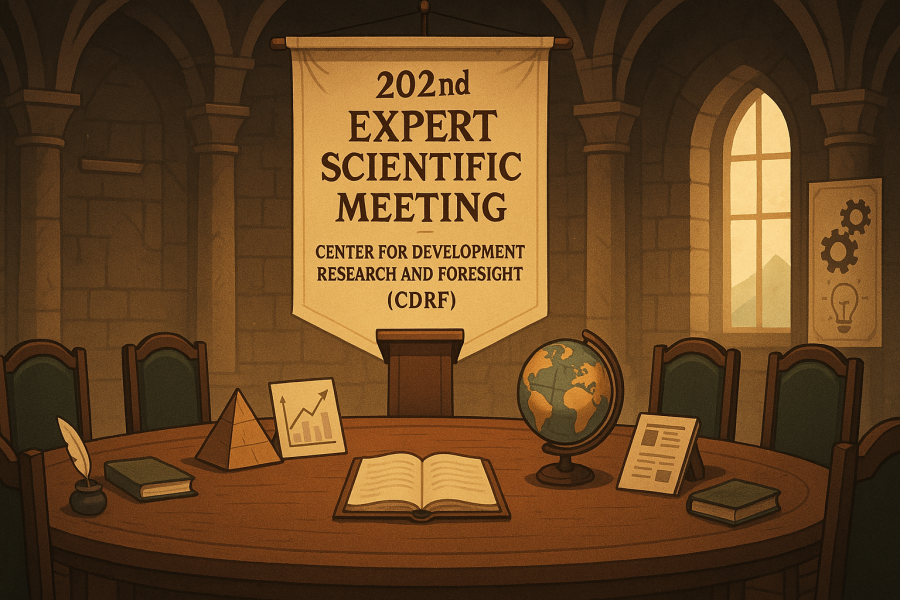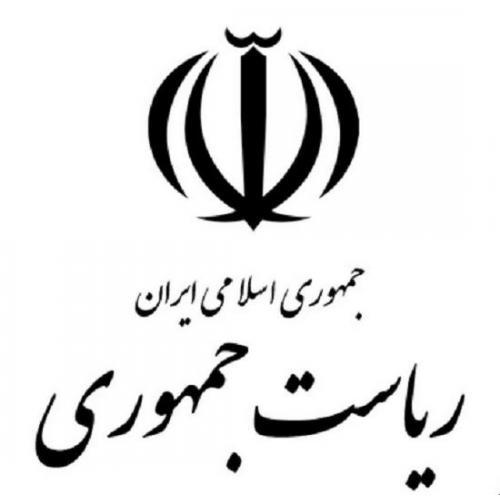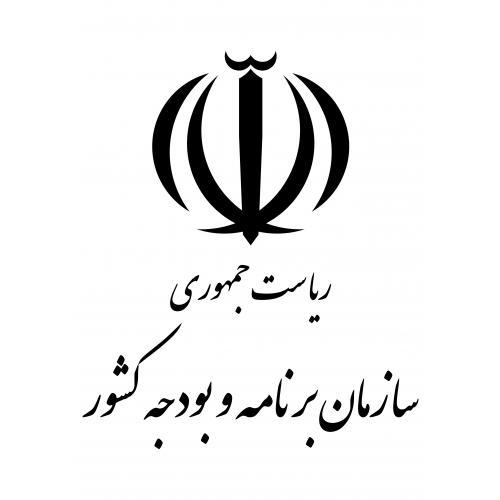

-
بررسی آییننامهها و دستورالعملهای برنامه هفتم پیشرفت
-
بررسی عوامل موثر بر افزایش تصادفات و تلفات جادهای و سوانح رانندگی و دادهکاوی تلفات انسانی
-
سازماندهی و بازآرایی فضایی آموزش عالی کشور
-
به روز رسانی سند ملی آمایش سرزمین
-
انجام مطالعات مناطق آزاد به عنوان نواحی پیشران اقتصادی کشور
-
اصلاح ساختار بودجه و پیاده سازی نظام یکپارچه مدیریت اطلاعات مالی دولت (IFMIS)

At the beginning of the meeting, Mehdi Razpour, Head of the Training Division at the CDRF and Secretary of the meeting, stated that climate change is one of the most critical global crises, affecting all aspects of human and natural life. It has had direct impacts on food resources, public health, and water security. In Iran, climate change has led to rising temperatures, altered precipitation patterns, increased droughts, and more frequent floods. These changes not only pose a serious threat to plant and animal species, but have also significantly affected Iran's economic and social development. Therefore, it is imperative to adopt serious, comprehensive, and long-term measures to address these challenges and mitigate the associated risks.
He continued by stating that the absence of a clear vision, long-term strategy, and comprehensive civil plan to address climate change and its adverse effects—along with technological limitations, weak technical standards and regulations for risk reduction in national and sectoral planning and budgeting, financial constraints, lack of coordination and integration at the international level among states, international organizations, and the private sector, as well as limited access to high-quality and coherent data—are among the most significant civil barriers and challenges in responding to this ongoing phenomenon.
Regarding the objectives of this expert scientific meeting, Mehdi Razpour emphasized that gaining a clear understanding of the current situation, forecasting future trends, and formulating appropriate solutions to reduce the risks and negative impacts of this phenomenon on civil economic and social development is essential. Therefore, this meeting aimed to examine the effects of climate change on Iran's economic and social development and to propose programs, strategies, policy-level recommendations, and macro-level solutions to enhance regional and international cooperation for mitigating the adverse consequences of climate change.
As the meeting proceeded, Mostafa Mohaghegh, Senior Coordinator at the APDIM, and the scientific chair of the meeting, emphasized the importance of the topic. He stated that through the organization of expert meetings and the promotion of inter-agency coordination, efforts must be made to assess the extent of the impact of climate and weather changes on society and the economy. By utilizing figures, data, statistics, documentation, and empirical evidence, we must demonstrate the consequences of climate change and, based on these findings, seek appropriate and effective solutions to address the challenges posed by this phenomenon.
Mostafa Mohaghegh added that today we are confronted with several key concepts that are widely discussed across society. These include resilience, risk reduction, and the Sustainable Development Goals (SDGs). He emphasized that there is a logical and interdependent relationship among these three concepts, which should be given due consideration in research endeavors.
He explained that the first and fundamental step is to build resilience among individuals, institutions, and communities to enhance their capacity to withstand and adapt to disasters and adverse events. Once resilience is established, attention must then be directed toward identifying and reducing existing and potential future risks. Ultimately, the fulfillment of these two prerequisites—resilience and risk reduction—will pave the way for achieving sustainable development.
Therefore, in the path toward realizing the SDGs, the first essential condition is fostering resilience, followed by the systematic assessment and mitigation of both current and future risks.
The Senior Coordinator of the ADPIM explained that in order to achieve successful development, it is essential to eliminate the factors that contribute to increased risk and focus on reducing future risks. He noted that risk assessment relies on two key criteria: the probability of risk occurrence and the potential consequences. These two dimensions serve as the basis for evaluating and measuring risks effectively.
He emphasized that through comprehensive risk assessment and measurement, it is possible to determine the scale and severity of potential risks and their potential consequences. In some cases, it is even feasible to identify the likely location of risk occurrence. As a result, such evaluations enable the prevention of high-impact risks that could cause significant harm to society and the economy.
Later in the meeting, Farzam Pourasghar Sangachin, an environmental researcher and expert, speaking as one of the panelists, referred to greenhouse gases as one of the most pressing global threats. He stated that a growing number of scientists and economists believe that the next major global constraint humanity must confront will be the consequences of greenhouse gas emissions and global climate change. The large-scale release of greenhouse gases resulting from the combustion of fossil fuels has significantly altered the Earth’s climate systems at both global and regional levels. A portion of these changes is attributed to human activities. The term “enhanced greenhouse effect” refers to the phenomenon whereby the global climate is being altered due to the increased concentration of greenhouse gases stemming from human activities.
He further emphasized that the Earth, as a closed system, is highly vulnerable, and even minor disturbances or anomalies in any of its components can lead to widespread environmental, economic, social, and occasionally political challenges. This concept can be effectively explained within the framework of the “Butterfly Effect” theory, which suggests that small, seemingly insignificant events can sometimes result in profound and far-reaching consequences. In essence, minor occurrences may, over time, fundamentally alter the trajectory of larger systems, including human destinies and global ecological balances.
Farzam Pourasghar Sangachin explained that, according to the principle of common but differentiated responsibilities outlined in Principle 7 of the Rio Declaration on Environment and Development (1992), states shall cooperate in a spirit of global partnership to conserve, protect and restore the health and integrity of the Earth’s ecosystem. States bear shared but differentiated responsibilities proportional to their respective contributions to environmental degradation. Developed states acknowledge that, given the environmental problems they have caused globally and based on the technologies and financial resources available to them, they bear greater responsibility for addressing issues related to sustainable global development.
The researcher further identified several negative consequences of climate change, including reduced agricultural crop yields, increased incidence of infectious diseases, higher mortality rates due to heatstroke, elevated risk of flooding caused by intense rainfall, increased soil erosion, greater pressure on both public and private insurance systems, heightened likelihood of damage to certain crops, increased demand for cooling electronic devices, and decreased energy supply. These are among the most significant adverse impacts of climate change on human systems.
He also addressed the impacts and consequences of climate change on the civil climate, stating that the Islamic Republic of Iran, due to its ecological conditions, geographical location, and position within the Earth’s arid belt, is recognized as one of the countries vulnerable to climate change. Consequently, it is significantly affected by this phenomenon and is expected to experience even greater impacts in the future.
The environmental expert outlined several policy recommendations and themes, including the development of a roadmap, strategies, and action plans for climate change adaptation; the review and revision of development policies and programs based on climate adaptation; the identification of vulnerabilities and enhancement of resilience against climate change; the expansion of afforestation efforts and prevention of natural land-use changes; the strengthening and empowerment of Iran to utilize international capacities; the identification of optimal policy options; and the detection of gaps and shortcomings in policy-making at regional, national, and local levels to facilitate climate change adaptation.
As the meeting proceeded, Sanjay Kumar Srivastava, Head of Disaster Risk Reduction at the ESCAP, as another speaker, referred to the issues facing Asia and the Pacific region. He stated that to assess the events and impacts of climate and weather on the economy and society over the next 50 years, it is essential first to examine their effects over the past 50 years. During this period, approximately 60% of the population in Asia and the Pacific has been affected by earthquakes and tsunamis, which have been the leading cause of fatalities in Asia.
Sanjay Kumar Srivastava continued: “Over the next fifty years, the most significant impact on society and the economy in Asia and the Pacific will stem from rising temperatures. The projected increase in temperature could put up to 80% of the population in this region at risk. This factor will have the greatest effect on the economy and Gross Domestic Product (GDP), potentially hindering our ability to achieve the SDGs outlined in our development plans.”
The Head of Disaster Risk Reduction at the ESCAP further emphasized that the impacts of climate and weather changes are neither uniform nor evenly distributed across regions. Certain areas, identified as focal zones, experience significantly greater climatic and weather-related effects compared to others, resulting in multiple risks accompanied by more severe consequences.
He further elaborated on the approaches for countries to address disasters and hazards, stating that the initial step for countries is to accurately understand the current risk situation and identify multi-risk hotspots within their territories. Subsequently, through effective policymaking, countries should respond to these disasters and climate changes with targeted strategies aimed at risk reduction. In addition to these measures, countries must allocate adequate financial resources and budgets to effectively manage disaster response and mitigate the risks associated with climate change.
In the proceedings of the meeting, the experts and specialists expressed their viewpoints and posed their questions.
It is noteworthy that this meeting was held on March 8, 2025, both in-person and virtually, with the participation of national and provincial executive agencies, universities, research centers, and think tanks, at the Hossein Azimi Hall located in the CDRF



